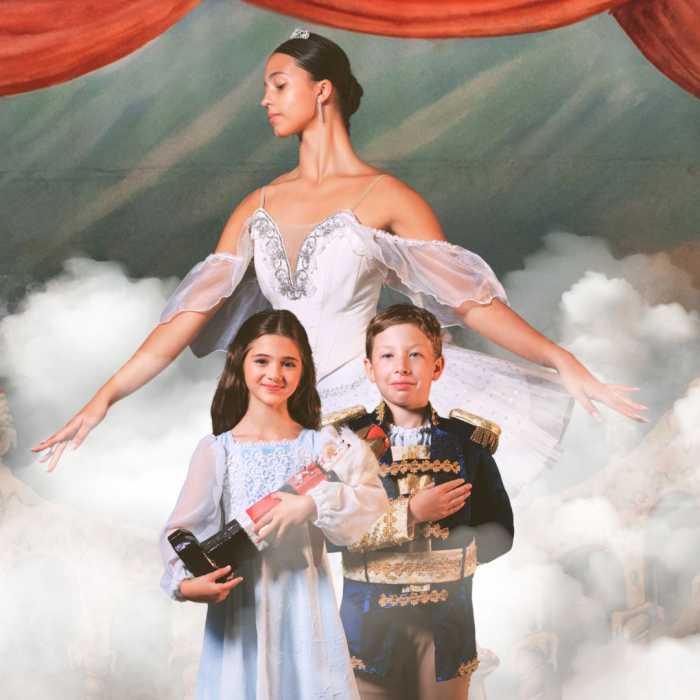The races had already been moved up two-and-a-half hours to avoid a looming thunderstorm when the skies opened up on Saturday afternoon. This was a New York summer, after all. Each day, hot and humid, has a chance of a torrential downpour. This is nothing new.
Now imagine racing a sailboat in these bipolar conditions, clouds spitting, winds fluctuating and gusting to over 20 miles an hour. Imagine meticulously maneuvering through tight turns at 60 miles an hour while avoiding the 11 other nations who had come to New York to battle for the sixth round of the sailing world title, the Rolex SailGP Championship.
This is the life of a professional sailor. Sailors are just like every other athlete — they train, they compete, and they perform in front of an audience, both those who attend in person and those who watch the races via broadcast around the world.
Their playing field is the open ocean. Each race is entirely dependent on Mother Nature. Each shift in the winds requires an adjustment. Each drop of rain adds a new layer of challenge.
They speed along the water in 50-foot foiling catamarans, powered by the wind. At the top level, sailing is a precise combination of science and physical strength, backed by split-second decisions.
So yes, like every other athlete — until they aren’t.
The sailors in the Mubadala New York Sail Grand Prix on Saturday and Sunday experienced the ebbs and flows of the New York summer. From land, the rain was obvious. On the water, the shifting winds and the strong current added more obstacles. In this sport, there is no such thing as plain sailing weather.
“Tricky day,” Taylor Canfield, the driver of the U.S. SailGP Team, said on Saturday after the first day of racing. “With the rain cells coming through, inconsistently changing the breeze direction. I think we had 50, 60 degree shifts. Everything from fully whipped up foiling to ‘dead in the water’ kind of feel.”

“You had to adapt extremely well today,” Anna Weis, the U.S. grinder, said. “It was one of those days as a sailor that you’re always looking for that extra gain.
“It’s been a while since we’ve had some rain. I remember Halifax last season had a little bit of rain. But this season, I feel like this has been probably one of the more tricky days.”
“The rain makes it quite tough to see the wind,” Tom Slingsby, the driver, CEO, and co-owner of the Bonds Australia SailGP team, explained. “The wind comes in and out when it’s raining like this. It’s very hard to read the wind, and then the current was sort of playing havoc with us. At times when the wind would die, the current was stronger than the wind and the boat. We were really struggling to get around the course at times.”
“It was so hectic out there,” Diego Botín, the driver of the first-place Spain SailGP team, said.
“It’s just a lot of snakes and ladders out there,” Annie Haeger, the strategist of the Northstar SailGP team, said.
“A bit of a mess,” added Manon Audiet, the strategist of the France SailGP team.
On Sunday, it was windier than the U.S. originally expected during the race window.
“We’re on some pretty light air gear, all things considered,” Canfield said. “Gusting over 20 knots on our light air foils is really challenging.”
Challenging enough that the U.S. finished in last place, accumulating no points over the weekend, despite Weis on Friday calling New York a second home for the squad. But as the U.S. CEO, co-owner and strategist Mike Buckley told amNewYork last week, “You can’t control Mother Nature.” Over the weekend, she was the Americans’ biggest rival.
On Saturday, she was the fans’ too. The thousands who had flocked to Governors Island to watch the races from the temporarily erected metal bleachers were shown on the broadcast huddled beneath umbrellas.
The race stadium was primitive. It had the basic amenities of any modern-day arena: concessions and merchandise stands.
During a baseball game, a rain delay means a break in action, while fans take shelter inside crowded concourses to wait out the showers. In sailing, the boats run through the storms. At a sailing race, the only part of the temporary stadium under cover was the Adrenaline Lounge, a double-decker premium area, with fans on top and each team’s mission control on the bottom, similar to a Formula 1 setup — fitting for a sport that’s often called F1 on water.
On the water, the sailors wear noise-cancelling headphones. During fly-bys close to Governors Island, the U.S. team could hear the fans through their microphones — enough to make them smile about having the support of a home crowd, like any team would.
A scoreless performance by the U.S. on home waters dampened the mood. Canfield, the only member of his squad who spoke with reporters after the second day of racing, was rightfully disappointed.
“We don’t want to be at the bottom of the pack,” he said. “It’s devastating. We all come from other successful programs. We’ve done well, and it hurts.”
As an athlete, Canfield knows that the best way to improve is to practice, review data and learn from mistakes. SailGP’s year-round schedule doesn’t allow for much training time, he said. They’d made small improvements as a team this weekend, but were still far from catching Botín and the Spain team, who now lead the 2025 season with 46 points.
This had been Canfield’s dream since he was young. He’d always thought about how he could make it in sailing. Fourteen years ago, he won a second consecutive ICSA Match Racing National Championship with Boston College. Two years after that, he won the World Match Racing Tour. To compete on a national level was the blue sky amid the dreary weekend.
“It’s really a dream come true for most of us to be part of this team,” he said.
For more sports like this SailGP feature, visit AMNY.com
Also Read : https://www.amny.com/sports/aaron-rodgers-jets-steelers-6-10-25/







































